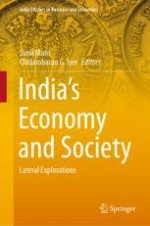2021 | OriginalPaper | Chapter
10. Towards Universal Health Coverage? Taking Stock of Two Decades of Health Reforms in India
Authors : T. K. Sundari Ravindran, Neena Elezebeth Philip
Published in: India’s Economy and Society
Publisher: Springer Singapore
Activate our intelligent search to find suitable subject content or patents.
Select sections of text to find matching patents with Artificial Intelligence. powered by
Select sections of text to find additional relevant content using AI-assisted search. powered by
